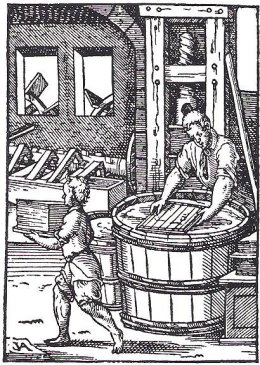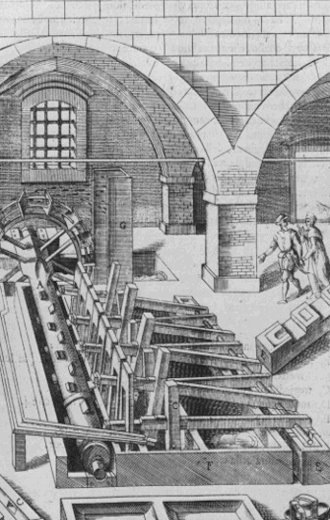
What is the first thing that comes to mind when one asks: What is paper made from?
The common answer, Trees
or Wood
. People assume automatically that paper is made from wood and
that paper and wood are synonymous.
However, paper has been made from wood only since the mid-1800s. Until the 1850s, paper was made from recycled linen and cotton rags. Ironically, when the Black Death killed millions of people in Europe, tons of clothing and rags became available - at just about the time the printing press was invented.
The invention of paper is usually attributed to Ts'ai Lun, an official in the Chinese royal court, in A.D. 105. The Arabs got papermaking 600 years later as one of the spoils of war. The Central Asian city of Samarkand was fighting the Chinese and captured a number of prisoners, two of whom were papermakers who were released in exchange for teaching the Arabs how to make paper.
The Arabs wasted no time in improving papermaking techniques - they were probably the first to make paper from
linen (Linen is made from the flax plant.) - and they spread the techniques throughout the Middle East and into Spain.
The English word ream
(meaning 500 sheets) is derived through Spanish and
French from the Arabic rizmah (a bundle
).
Paper, which was manufactured by hand and foot for a thousand years or so following its invention by the Chinese and adoption by the Arabs, was manufactured mechanically as soon as it reached medieval Europe in the 13th century. This is convincing evidence of how technologically minded the Europeans of that era were. Paper had traveled nearly halfway around the world, but no culture or civilization on its route had tried to mechanize its manufacture.
The first paper mills to be driven by waterpower were those of Xativa, near Valencia in Spain, mentioned in documents of 1238 and 1273. Seven water-driven paper mills were in active service in 1268 in Fabriano in Italy. The first known French paper mill is the Moulin Richard-de-Bas. It was manufacturing paper in 1326, and to this day, linen and cotton rags are still being made into paper. Many contemporary artists use Moulin Richard-de-Bas paper with the original watermark, with its date of 1326.

Expensive parchment, which is the skin of a sheep or goat that has been prepared for writing, was replaced by paper, which could be made more cheaply from linen and cotton. This, together with the Gutenberg's printing press in the 1450s, made the mass production of relatively cheap books possible for the first time. Because we live in a world that paper and the printing press helped to create, it is difficult today to imagine just how much the European world was transformed by the development of paper to work the printing press.
A bookseller in the Middle Ages seldom had many ready-made books in his shop. If you were one of the fortunate few who could read, you most likely would go in and order a book to be copied down for you and pick it up several months later; or, if you were very ambitious, you would simply borrow the first few pages of the book, take them home and copy them down yourself. Then you would come back and borrow the next few pages.
The lower cost of printing books on paper, and their subsequent availability, stimulated the foundation of new schools and universities. Because books were now more numerous, educational opportunities that were once restricted to the nobility and upper classes became more available to other classes in society, with dramatic increases in levels of education and literacy.
